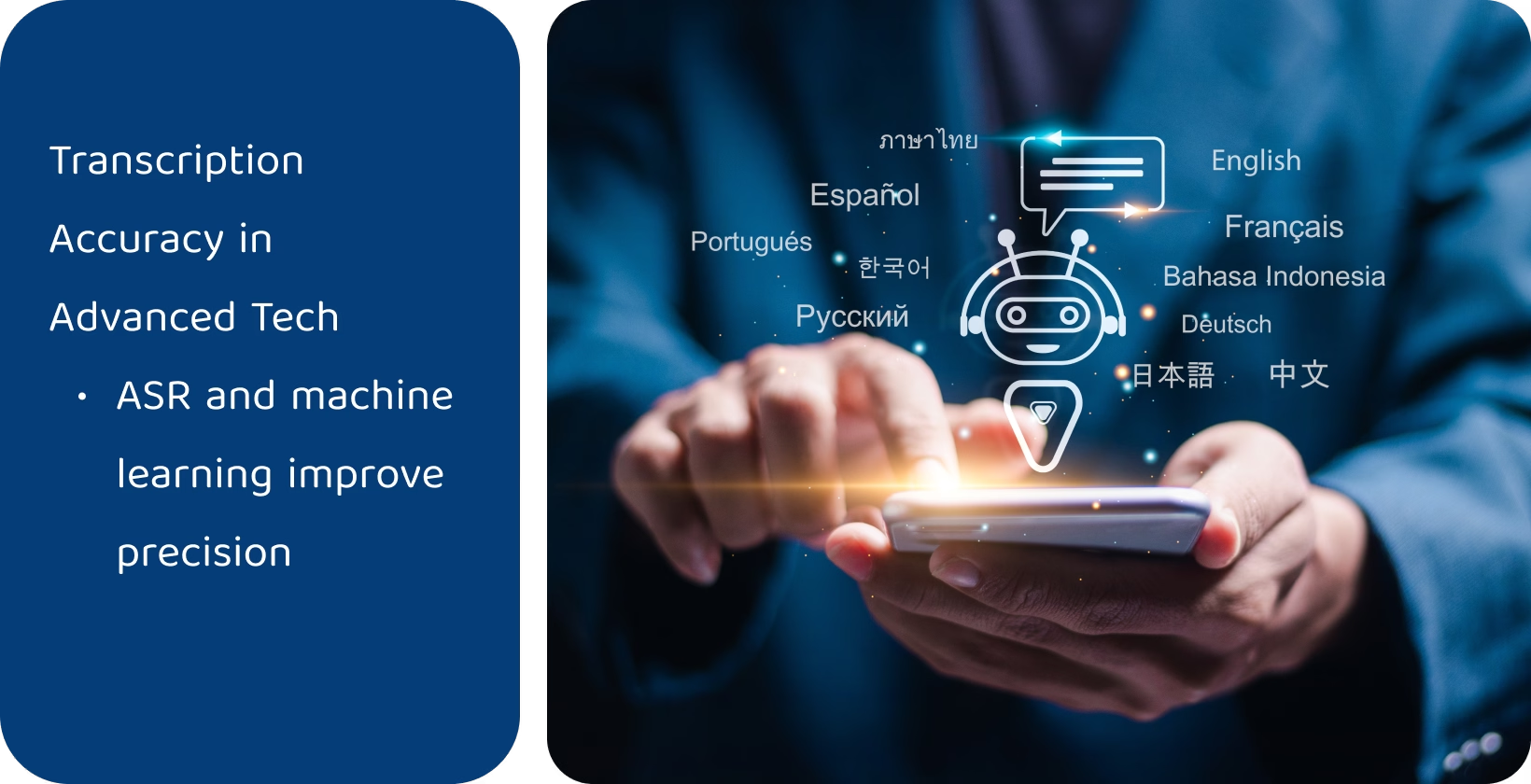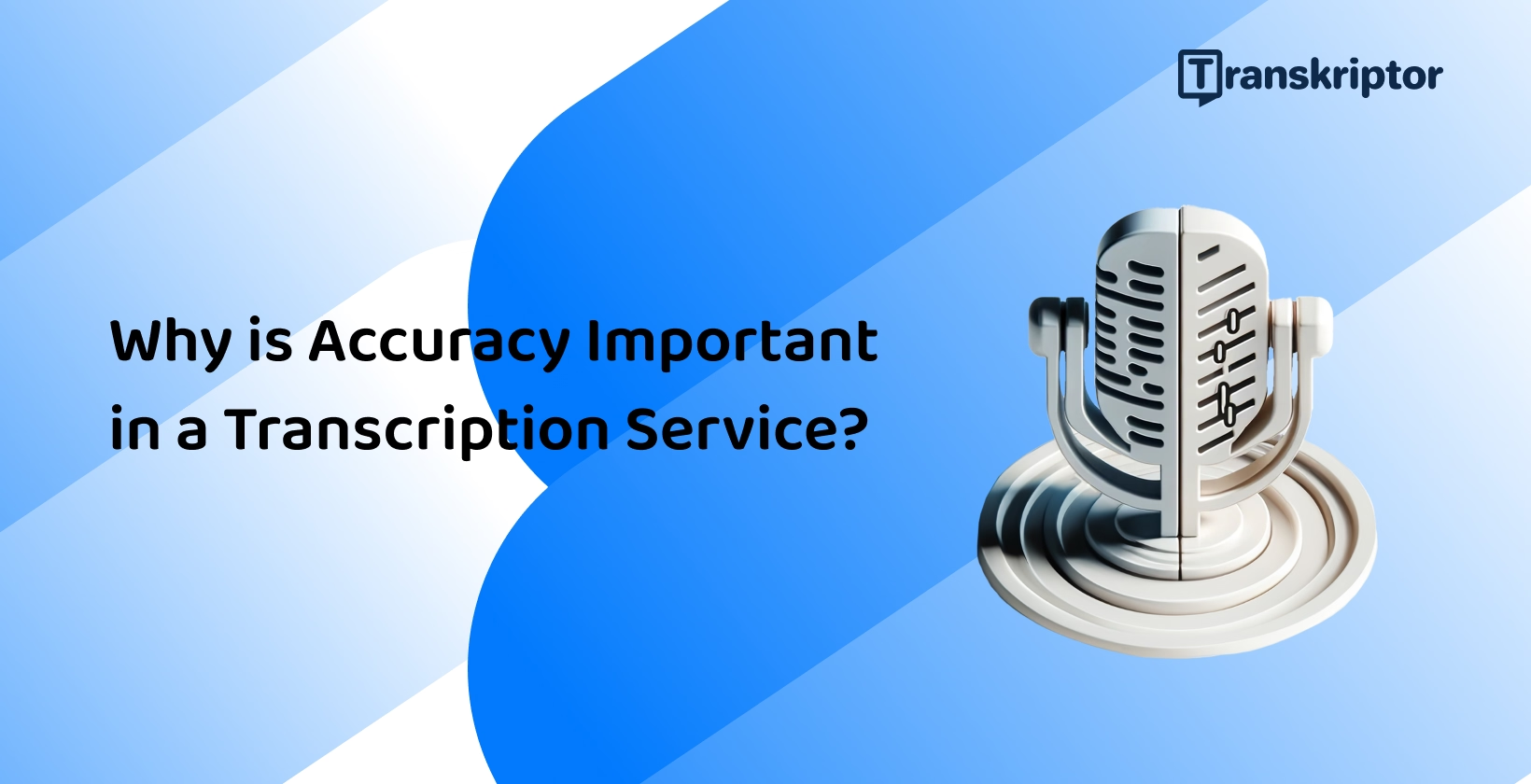The Impact of Accuracy on Transcription Quality
It’s simple - the bedrock of any transcription service is its ability to produce text that faithfully represents the audio source. Accuracy in transcription not only ensures that the intended message is conveyed without distortion, but also preserves the integrity of the information. In professional settings, where the stakes are high, the precision of transcription can mean the difference between a successful outcome and a costly misunderstanding.
Accurate transcriptions support accessibility, allowing individuals with hearing impairments or those who prefer reading over listening to access information. Moreover, in legal and medical fields, where precision is paramount, the quality of transcription directly affects the quality of service and decision-making processes, highlighting its critical role in various industries.
In short, accuracy is the linchpin upon which the reliability, effectiveness, and integrity of transcription services rest.
Accuracy in Different Transcription Contexts
The importance of accuracy varies significantly across different transcription contexts. In legal proceedings, for instance, every word can carry weight in judgments and legal outcomes, making accuracy non-negotiable. Similarly, in medical transcriptions, precise documentation of diagnoses, treatments, and patient interactions is crucial for ensuring patient safety and facilitating continuity of care.
In academic and research settings, transcription accuracy aids in the accurate representation of interviews and focus groups, critical for data analysis and research findings. Meanwhile, in the realm of media and entertainment, accurate transcriptions ensure that content is accessible and inclusive, enhancing viewer experience through subtitles and closed captions.
Factors Influencing Transcription Accuracy
Several factors play a pivotal role in determining the accuracy of transcription services. The quality of the audio file, encompassing clarity, background noise, and the speakers' articulation, significantly influences transcription outcomes. The complexity of the subject matter, the presence of technical jargon, and the dialects or accents of the speakers also add layers of challenge to achieving high accuracy levels.
Plus, the proficiency and expertise of the transcriptionist in understanding the context and nuances of the audio play a determinative role; this once again underscores the importance of skilled transcriptionists - or AI tools - equipped with a comprehensive understanding of the subject matter and the nuances of language.

The Role of Technology in Enhancing Accuracy
Advancements in technology have ushered in a new era for transcription services, with cutting-edge tools and software enhancing their accuracy and efficiency. Automatic speech recognition (ASR) technology, combined with sophisticated algorithms and machine learning, has significantly improved the ability to accurately transcribe audio to text. However, despite these technological strides, human oversight remains indispensable.
Professional video transcription solutions, like those offered by Transkriptor, exemplify the synergy between human expertise and technology, ensuring the highest levels of accuracy. These solutions leverage technology to handle the heavy lifting while allowing professionals to refine and verify the transcriptions, ensuring they meet the stringent standards required in professional settings.
Consequences of Inaccuracy in Transcription Services
So, what about when transcription goes wrong? Put simply, the repercussions of inaccuracies in transcription services can be far-reaching. In legal and medical contexts, even minor errors can lead to misunderstandings with serious implications, from misdiagnoses to judicial errors. Inaccuracies can also tarnish reputations, undermine credibility, and lead to financial losses, highlighting the paramount importance of precision in transcription services.
Moreover, in the context of accessibility, inaccuracies can result in information being inaccessible or misleading for those relying on transcriptions, underscoring the ethical implications of ensuring accuracy.
Ensuring and Maintaining Accuracy
So what’s the solution? It’s simple - achieving and maintaining high levels of accuracy in transcription services requires a multi-faceted approach. This includes rigorous quality control processes, continuous training for transcriptionists, and the integration of advanced technology. It also involves a commitment to understanding the unique needs and challenges of different transcription contexts, tailoring approaches accordingly.
And the burning question - is transcription software worth it ? We believe so! In 2024, the need for transcription services is significantly increasing, as our lives are increasingly filmed and as online content is increasingly diversified. And when it comes to compliance purposes, accessibility, and even for a content marketing boost, transcription isn’t an investment that you should willingly forgo in the years to come.






